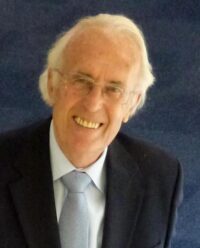Event recording
Event description
It proposes that space-time is in essence a three-dimensional discrete illusion. Thinking generates thoughts, thought-forms and concepts that express our personal view and knowledge of the world and of space-time. In the difference-assimilation of that knowledge is the causation of the entanglement of consciousness and matter. Measuring length is used as an example to explain the principles of thinking, showing that the essence of existence is paradoxical, resembling the singlet state of two superposed electrons in quantum mechanics. Entanglement and superposition are equivalent concepts for any two non-classical probabilistic theories. The singlet state property of non-locality implies a holistic universe. In measuring, there is a 50/50 percent chance of finding spin up or down along any axis whatever.
By considering consciousness and matter as opposites, it is shown that no primacy can be assigned to matter or consciousness due to their reciprocal creation and equivalence. Referring to Indian thought, the first line in the Shiva Sutra of Vasugupta (875—925 CE) relates consciousness to the concept of self. The meanings of self (ātmā, adhy-ātma, mahān-ātmā), as found in the Upaniṣads and the Bhagavad Gita, are shortly discussed. By doing a measurement on a qubit, the qubit collapses into a binary state, a “bit” of existence that extends John Wheeler’s “It from Bit” into “It from Bit from Qubit.” Human thought, being timeless, experiences time by renewing distinctions. These repeated limitations create discrete space and time, the awareness of differences in forms. The various perceptions of time as developed in the East (Rigveda, Atharvaveda) and the West (BIPM) are compared.
 Dr. Gerard D. C. Kuiken received his PhD from the Delft University of Technology, where he lectured in the fields of fluid mechanics and thermodynamics. He is the author of Thermodynamics of Irreversible Processes: Applications to Diffusion and Rheology in Wiley’s Tutorial Series in Theoretical Chemistry (John Wiley, 1994). In 1963 he met his yoga teacher Saswitha. During the academic years 1971 to 1973 he presented Saswitha’s Principles of Thinking and Eastern Thought at the university. Being curious about the Sanskrit text of the Bhagavad Gita, he studied Sanskrit and published a number of translations with comments in the years 2006 to 2019. Forthcoming in 2022 is the final volume of his Svabhavikasutra: The Roots of the Bhagavad Gita (www.gdckuiken.com). His papers can be found on ResearchGate and Academia.
Dr. Gerard D. C. Kuiken received his PhD from the Delft University of Technology, where he lectured in the fields of fluid mechanics and thermodynamics. He is the author of Thermodynamics of Irreversible Processes: Applications to Diffusion and Rheology in Wiley’s Tutorial Series in Theoretical Chemistry (John Wiley, 1994). In 1963 he met his yoga teacher Saswitha. During the academic years 1971 to 1973 he presented Saswitha’s Principles of Thinking and Eastern Thought at the university. Being curious about the Sanskrit text of the Bhagavad Gita, he studied Sanskrit and published a number of translations with comments in the years 2006 to 2019. Forthcoming in 2022 is the final volume of his Svabhavikasutra: The Roots of the Bhagavad Gita (www.gdckuiken.com). His papers can be found on ResearchGate and Academia.